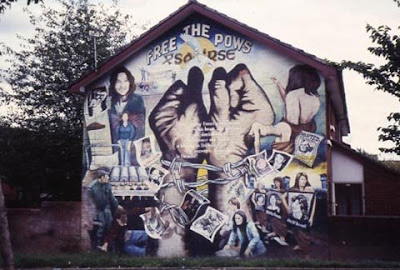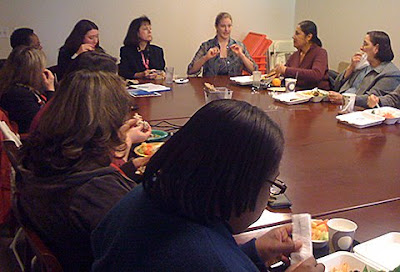Veronica Hart '07, Assistant Director of Technical Services, Development
Overview: How technology in her life inspired Veronica to come to Scripps, minor in computer science, work for IT, and finally get a wonderful job! Quick overview of how technology and education have crossed paths in her life from working with the dynamics of learning with Lego Mindstorm robots to IT-FITS training to her current job in Development Services.
Are people who are comfortable with computer technology simply born that way? Or is tech savvy nurtured by experience? Although she feels like she was "geek from birth," Veronica Hart kicked off the Spring 2008 IT Tech Bytes Brown Bag lunch series with an engaging, insightful, and technology-free presentation about the factors that led her to embrace computing.
Veronica shared how her family, early involvement with computing gaming, and various experiences as a student at Scripps led her to her current position as Assistant Director of Advancement Services.
Veronica's father worked in the Los Alamos Lab in New Mexico; built the first electronic slot machine. Her father insured her access to computers and modeled fascination and enthusiasm for computers. Veronica learned to use the Internet in school. For her, the turning point was the discovery of a popular online multi-player game. She became so adept at Aetolia, a text-based medieval fantasy MUD, that the game makers asked her to help them to develop the game while she was still in high school. Eventually, her love of fantasy found a home in computer science. Before coming to Scripps, Veronica also enjoyed an internship working with Lego Mindstorm robots at the Santa Fe Institute.
Why did Veronica choose Scripps? Like many computer geeks, Veronica's early experience with computers came from experience, not formal study. She took no computer science classes in high school. Veronica wanted to go to college in Southern California because of visits to her grandmother's home in Alta Dena. When she stepped on campus, she knew that Scripps was it.
At Scripps, Veronica had the opportunity to build games. She began her undergraduate studies as a Physics/Computer Science major. There were only two other Scripps women CS majors in her class. She took as many classes at Pomona and Mudd as at Scripps, including the first class on Gender and Computing at Harvey Mudd. After two years she switched to Studio Arts with a minor in CS. She got involved with the Game Developers Conference. Her senior thesis was on "Breaking Gender Stereotypes with Games," specifically with World of Warcraft, a massive multiplayer online role-playing game.
Veronica wrote the Users Guide for the data projector at the lunch session. She worked for Scripps IT as a lab consultant her freshman year, and moved up in the department over the next four years. Veronica was the first student instructional technology assistant hired for the IT-FITS (Faculty In-Office Technology Support) program. As an art major, working for IT gave her a direct daily connection to technology. She learned a lot about hardware, software, training, teamwork, and problem solving that excited her. Her current position in Development benefits from these experiences-and lets her work with code and databases.
Q&A
Many students seem so wrapped up in texting that they don't feel comfortable with face-to-face interaction. What are some things that helped you stay connected to the physical world?
The kinds of things that Scripps does: movies on the lawn and taking classes like sculpture. Maybe no cell phones should be allowed at events.
You explain technology so well. Do you think that women are better at explaining these things?
I think that women are better translators between techies and non-techies. When I'm with my Mudd friends, sometimes I get lost. There are times when you have to be social. Scripps helped me develop my communications skills.
Do you think that the place to approach young women is at the high school level so they can find out about women in CS?
Yes. More and more women are in computer science as role models.
If you wanted to go to school in Southern California, why not UCLA or other colleges with more CS emphasis?
I didn't have the technical knowledge. No CS courses in high school. Many of the boys teach themselves. When I first stepped foot at Scripps, I knew it was the right place. The architecture, the physical campus felt like a place where people are well taken care of. There was an appreciation for being outside too. For education. For women.
How did they sell Scripps to you?
The multi-college consortium — I could take classes at all the colleges. I sat in on HMC classes.
When you started at Scripps, was there a big transition in learning? How did you make that transition?
Yes. Outdoor orientation really helped. A great start. The smallness of the college... Finding professors for advice. I never felt a lack of resources. I never expected to feel that special treatment as a staff member too. I'm working with great people. I'm constantly grateful for the opportunity to give back.

 information that helps. It's a lot easier to see electrons bond in a video. There are other resources there.
information that helps. It's a lot easier to see electrons bond in a video. There are other resources there.







